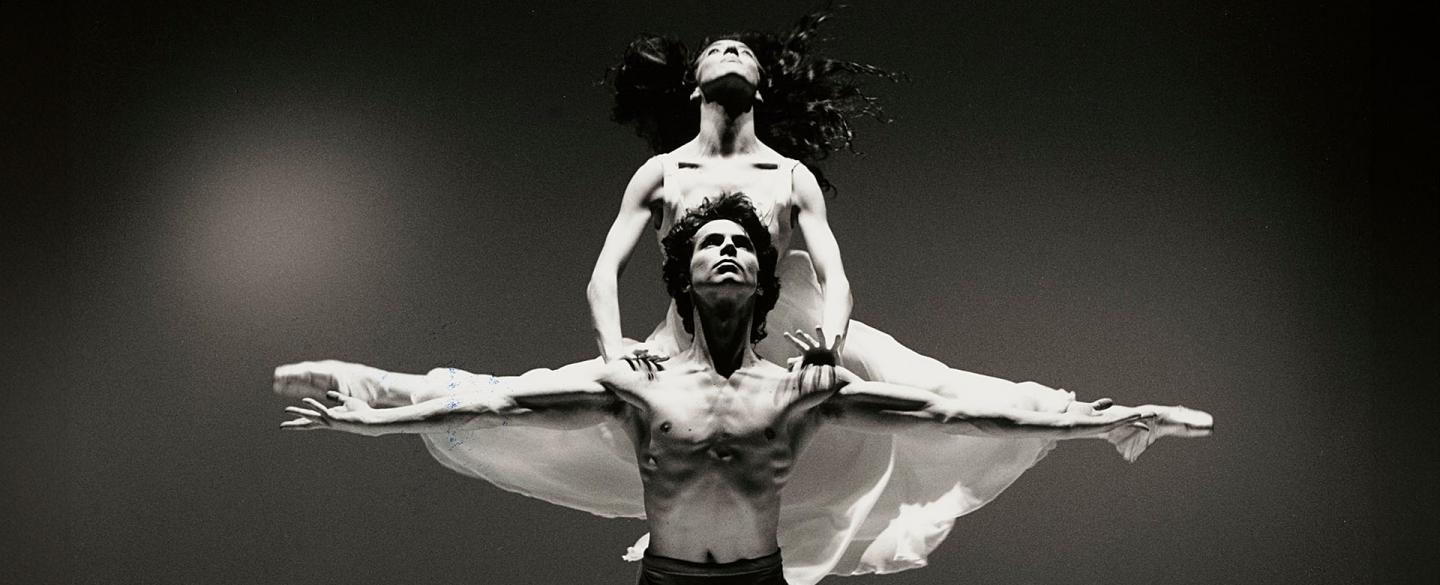

In spring 2024 Christopher Gable CBE and Massimo Moricone’s Romeo & Juliet returns to the stage. Back in 2015 a flood damaged the original sets and costumes from the production and our technical and wardrobe teams have been working to bring them back to life.
Whilst we prepare for the ballet's revival, some of the dancers who performed in the 1991 production will be joining us in the studio, including Jayne Regan Pink – the original Juliet.
After training at the Royal Ballet School, Jayne spent much of her career performing as a Principal Dancer for the Company (then known as NBT or Northern Ballet Theatre.) Jayne’s first featured role was the Pupil in Fleming Flindt’s La Leçon and her performance in this role later led to her promotion to Principal dancer. In 1997, dance critic for The Independent John Percival remarked that Jayne was Gable’s “supreme must throughout this period.”
Jayne went on to create roles in Christopher Gable’s Romeo & Juliet, A Christmas Carol, and Cinderella. Jayne also performed in roles choreographed by Michael Pink, another of Gable’s key artistic collaborators, such as Giselle, Swan Lake, Dracula and The Hunchback of Notre Dame.
Since retiring, Jayne moved to Milwaukee, Wisconsin with her husband Michael Pink who is Artistic Director of Milwaukee Ballet. Jayne has worked as a choreographer, movement director, dialect coach and repetiteur.
In 1991 Jayne debuted in the iconic role of Juliet alongside William Walker as her Romeo. The performances by Jayne and William were met with rave reviews. The Sunday Times called them “spellbinding” and “exemplary both in dancing and in every dramatic nuance.” Alan Powell in The Telegraph called Jayne’s portrayal of Juliet the “jewel of the production.”
We caught up with Jayne to hear what it was like to perform in this iconic ballet in the 90s and learn a little bit more about the fascinating history behind this production.
I feel this was a design lead production, uniquely imagined by Lez Brotherston for a touring company, with a creative approach to the original text. Christopher understood his young company, which was fresh and bold! He encouraged us all to explore the possibilities; good or bad and didn’t feel the need to create unnecessary dance opportunities that did not further drive Shakespeare’s beautiful narrative. Massimo’s choreographic style was youthful and had a stylistic identity that paired well with Christopher’s concept, and the climate that the company inhabited at that time.
It was so new to us all in style and it was intense honest work and so exciting. I was in a rare and privileged position of Christopher’s trust. I knew there was a lot at stake, but at the same time my naivety and slightly subversive nature may have been well suited to the role and the endeavour. I had the most wonderful, spirited partner in William Walker, that I felt I could close my eyes and fly. It was exciting to feel so integral to Christopher and Lez’s vision, and at the same time to want to excel physically as a dancer for Massimo’s exacting style. It was about full commitment and collaboration across the organsiation. Mostly, it was the perfect time and perfect production for the company’s coming of age.
Lez’s designs honour the stories, and absolutely bring to life the director’s vision, with a depth of detail that really enriches all the artists’ processes. It’s rather like viewing a photograph in black and white, and Lez brings the colour, and the enduring identity that was certainly the hallmark of NBT (Northern Ballet Theatre was the name of our Company at the time) productions during my time there as a dancer. He’s a master.
A very special time for me was spending a week in Istanbul in 1997 with Christopher and Denis Malinkine (Original Dracula). We had flown out to do some advance publicity for the company’s tour there with Romeo & Juliet. We worked through the day, and each night we headed into the narrow lanes off Istiklal Street to eat, drink, laugh a lot, and listen to Christopher tell stories. Crucially we learned how to order “a bottle of white wine please” in Turkish. It was magic.
The two most powerful moments for me personally to perform were the moments of stillness like those on the balcony just before Romeo surprises Juliet. It is such a poignant moment of the anticipation of what’s to come, in the same way as Juliet’s awakening in the crypt as the story completes its tragic arc.
The music, the stillness, the humanity. It’s something everyone can experience and relate to, without being a dancer. There is so much hope and possibility in the moment when Juliet awakes, which is why it is ultimately so overwhelmingly crushing when we discover Romeo’s death.
Its themes are numerous, but distilled I feel Romeo & Juliet is a story about a pure and innocent love, and the inevitable tragedy wrought upon two young people by society. Audiences continue to connect with this story, because as humans we continue to fall in love, and equally continue to make the same mistakes time and time again.
Restaging this beloved piece of Northern Ballet heritage for people to experience and enjoy in the future is only possible with support from you, our audiences. So far, we have raised just under £50,000 towards our ambitious target of £60,000.
Every donation makes a real difference in helping to recreate all of the costumes, sets and props needed to transport our audiences into this iconic tale of forbidden love. The support for our appeal has also enabled us to perform Romeo & Juliet with live music from Northern Ballet Sinfonia in spring 2024.
Will you donate to help us reach our target?
With your support we can rekindle the romance for future audiences to make their own Northern Ballet memories. Donate Now.
Photos Anthony Crickmay, Richard Farley and Guy Farrow.